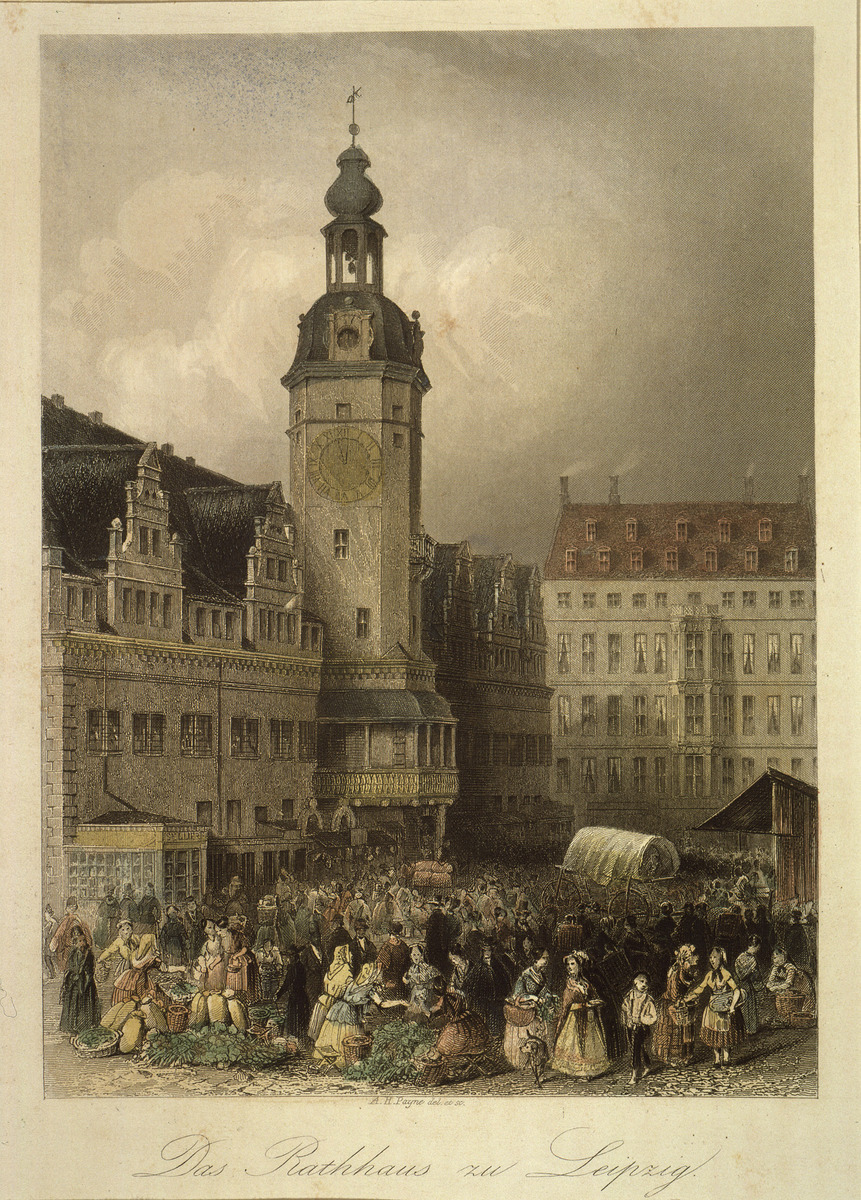Abstract
Nineteenth-century Leipzig was both a cradle of culture and education and a major center of German and European commerce. The city was famous for its illustrious publishing houses, the Gewandhaus orchestra, and its prominent university. Leipzig was the birthplace of composer Richard Wagner (1813–1883), and both Johann Sebastian Bach (1685–1750) and Johann Wolfgang von Goethe (1749–1832) lived there for a time. This 1850 painting of Leipzig’s medieval market square conveys the impression of a pre-industrial town. By that time, however, it was already gaining a reputation as a manufacturing center. From the Middle Ages onward, Leipzig’s Messe (trade fair) had functioned as a European trading center, and merchants from as far away as North and South America began attending it in the early 1800s. (Today, it is the oldest extant trade fair in the world.) In 1839, Leipzig became a terminal station on the first long-distance railroad in Germany, the Leipzig-Dresden Railroad. Thereafter, it became a major hub for Central European rail traffic. Steel engraving, colored by Albert Henry Payne, c. 1850.
